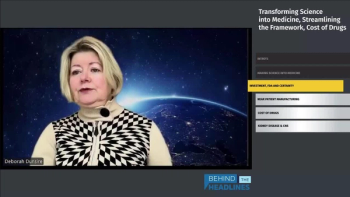
Equipment and Processing Report
- Equipment and Processing Report-12-17-2008
- Volume 0
- Issue 0
XML Tools for Increasing Efficiency and Product Quality
A surprising amount of the discovery and development life cycle is still based on manual and disconnected process steps.
Expensive inefficiencies
The average cost of moving a new drug through the development process in the United States ranges from $300 million to $1.2 billion, and the process takes an average of 12 to 15 years. One in 10,000 candidate compounds completes the development process, and it receives just five to eight years of patent protection. A surprising amount of the discovery and development life cycle is still based on manual and disconnected process steps. Pharmaceutical companies have recognized the critical need for improvement and are quickly embracing emerging information technologies to maximize development and commercialization efficiencies, minimize errors, and realize the potential to reuse the intellectual property created during this early phase.
Room for improvement
Traditionally, engineers and development scientists have used flow charts, process definitions, and paper-based recipes to document the steps of the manufacturing process. The resulting volume of complex information can be intimidating; it can total hundreds of pages of documentation and can also lead to inefficiencies in process and recipe management. In particular, the following areas call for improvement:
Content reuse. Creating and managing process-definition elements within unstructured documents provides no mechanism for reusing the elements.
Knowledge management. A document-based approach does not provide a simple way of searching the content and structure of process definitions or recipes.
Technology transfer. When a process definition included in a spreadsheet or document passes from research and development to pilot manufacturing to become a recipe, the information from the flow charts and spreadsheets is manually transferred to the manufacturing execution systems. Manual copying of process logic and parameters is time-consuming and might introduce errors in the technology transfer, putting quality at risk.
Regulatory submissions. Authoring and document-management tools based on XML, a language that provides a format to exchange information, have changed the way that pharmaceutical companies do business. Companies are realizing the efficiency that XML-based tools bring to many elements of the development life cycle. Basing Common Technical Documents, Structured Clinical Trial Protocol documents, and Structured Product Labeling documents in XML helps identify and organize the PDF files that make up a regulatory submission. In addition, the US Food and Drug Administration is encouraging, and in some cases requiring, manufacturers to submit drug-establishment registration and drug-listing information in XML.
XML as a recipe-management tool
XML-based tools and standards help life-science companies overcome many of the challenges they have faced with traditional documentation. BatchML, an XML implementation of the Instrumentation, Systems, and Automation Society’s (ISA) ISA-88 standard, represents the graphical process models, procedures, and terminology in ISA-88 format. In addition, companies are using BatchML to represent process definitions for regulatory submissions, recipe management, and formula management.
A place to start
In early development, process definitions (represented as master recipes) are created graphically as ISA-88 procedure models, stored as BatchML, and managed centrally within a system of record. Using the ISA-88 model as a graphical user interface, scientists can draw the process flows and associate parameters with appropriate procedures in the process. Within the BatchML definition, all of the underlying critical-to-quality (CTQ) parameters are directly associated with the process model, which becomes the one authoritative version of the truth.
Using a drag-and-drop, visual flow chart interface familiar to development scientists and engineers, development scientists can create and edit sequential processes in a recipe. A graphical approach enables process manufacturers to do the following:
- Improve information transfer between engineering and manufacturing, including third-party contractors and partners
- Improve the identification and management of CTQ parameters
- Increase the reuse of process definitions among products through recipe building blocks and recipe normalization
- Comply with regulatory submissions of master recipes and speed up FDA’s approval process, using ISA-88 recipes as the basis for expressing and reporting CTQs.
Conclusion
Pharmaceutical companies are attempting to embed quality into their processes, improve productivity, and ease regulatory review by adopting XML-based graphical editors. Using a BatchML graphical editor in early development through commercialization greatly reduces the overall time to market for new drugs and indications, compared with the traditional document-based approach. The new approach enables the intellectual property contained in the process definitions to be reused within existing development environments.
Michael Power is a senior program manager at Cognizant, 500 Frank W. Burr Blvd., Teaneck NJ 07666, tel. 703.431.6966,
Articles in this issue
about 17 years ago
December 2008 Editor's Picks: Products from Spiroflow Systems and Sephaabout 17 years ago
Stoppering Techniques for Prefilled SyringesNewsletter
Get the essential updates shaping the future of pharma manufacturing and compliance—subscribe today to Pharmaceutical Technology and never miss a breakthrough.




